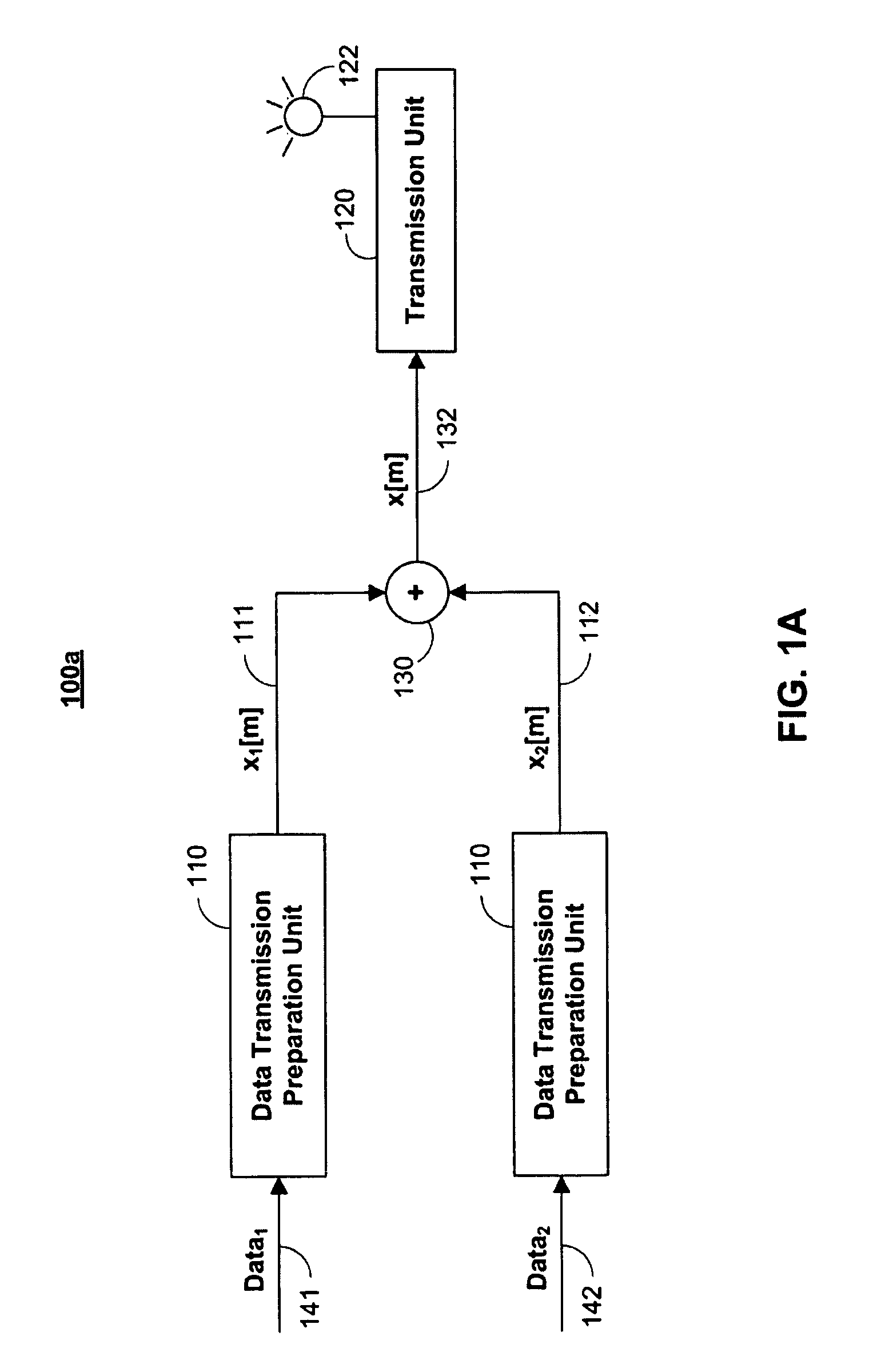Methods and apparatus for providing receivers for use in superposition coded multi-user systems
a multi-user system and receiver technology, applied in the field of superposition coding multi-user systems, can solve the problems of inability to achieve optimal data rate, inability to implement, and inability to meet the requirements of superposition coding system data rate,
- Summary
- Abstract
- Description
- Claims
- Application Information
AI Technical Summary
Benefits of technology
Problems solved by technology
Method used
Image
Examples
Embodiment Construction
[0029]This invention generally relates to extracting data from a superposition coded signal that is received by a transmission source or a user receiver. For illustrative purposes, this invention will be described in the realm of a superposition coded signal that includes data unique to two different users but it should be understood that this invention is applicable to superposition coded signals that include data unique to more than two users.
[0030]FIG. 1a is a diagram of an illustrative transmission source superposition coded signal downlink transmitter 100a in accordance with an embodiment of the present invention. As defined herein, the term transmission source is used to represent any base station source, WiMax transmission source, WiFi transmission source, mobile phone tower, or any other source that broadcasts or receives a superposition coded signal to / from users. Transmitter 100a when operating in downlink mode combines and transmits data unique to two different users as o...
PUM
 Login to View More
Login to View More Abstract
Description
Claims
Application Information
 Login to View More
Login to View More - R&D
- Intellectual Property
- Life Sciences
- Materials
- Tech Scout
- Unparalleled Data Quality
- Higher Quality Content
- 60% Fewer Hallucinations
Browse by: Latest US Patents, China's latest patents, Technical Efficacy Thesaurus, Application Domain, Technology Topic, Popular Technical Reports.
© 2025 PatSnap. All rights reserved.Legal|Privacy policy|Modern Slavery Act Transparency Statement|Sitemap|About US| Contact US: help@patsnap.com



